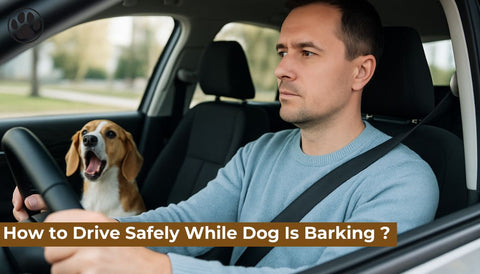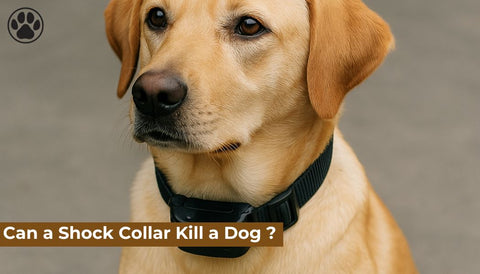
How to Get Mats Out of a Dog’s Hair ?
of reading - words
A matted coat is more than just an appearance issue—it can cause discomfort, skin irritation, and even health problems for your dog. Knowing how to get mats out of a dog’s hair is essential for maintaining their comfort and well-being. This guide will walk you through the safest and most effective methods to remove mats, prevent them from coming back, and keep your dog’s coat in top condition.
Understanding What Mats Are
Mats are clumps of tangled hair that form when loose fur, dirt, and moisture combine and knot together. They often appear behind the ears, under the legs, around the collar area, and along the belly—places where friction occurs. Left untreated, mats can tighten over time, pulling on the skin and causing pain.
Why Mats Are a Problem
A dog with matted hair can experience a variety of issues, including:
-
Skin irritation and redness
-
Reduced air circulation to the skin
-
Hot spots and bacterial infections
-
Discomfort when moving
-
Difficulty grooming naturally
Severe matting may require professional grooming or even veterinary care.
Tools You’ll Need
To safely remove mats from your dog’s coat, gather the following tools:
-
A slicker brush
-
A metal comb with both wide and narrow teeth
-
A dematting tool or rake
-
Pet-safe detangling spray or conditioner
-
Treats for rewarding cooperation
-
Blunt-tipped grooming scissors (for emergency trimming only)
Using the right equipment is key to avoiding discomfort or injury.
Step 1: Calm Your Dog
Before starting the grooming process, make sure your dog is relaxed. Choose a quiet area and speak in a calm, reassuring tone. Offer treats and gentle petting to create a positive association with grooming. If your dog is anxious, try short sessions over several days.
Step 2: Apply Detangling Spray
Spraying a pet-safe detangler or leave-in conditioner onto the matted area helps loosen the knots and makes brushing easier. Let the product sit for a few minutes so it can penetrate the mat.
Step 3: Work from the Outside In
Begin by gently brushing the outer layer of the mat using a slicker brush. This method helps separate loose hair from the main tangle. Always hold the fur close to the skin with your fingers to reduce pulling and discomfort.
Step 4: Use a Dematting Tool
For stubborn mats, use a dematting comb or rake. Insert the tool at the edge of the mat and carefully work through it in short, gentle strokes. Never yank or pull forcefully, as this can cause pain or skin damage.
Step 5: Comb Through
Once the mat starts to loosen, switch to a fine-toothed metal comb. Work through the remaining tangles until the hair is smooth and free of knots. Be patient—rushing can break hair or irritate the skin.
Step 6: Trim if Necessary
If a mat is too tight or close to the skin, trimming may be the safest option. Use blunt-tipped scissors and extreme caution to avoid cutting your dog’s skin. In severe cases, it’s best to seek professional grooming help.
Preventing Future Mats
The best way to deal with mats is to stop them from forming in the first place. Here’s how:
-
Brush regularly based on your dog’s coat type (daily for long-haired breeds, weekly for short-haired breeds)
-
Use a detangling spray during grooming sessions
-
Keep your dog’s coat clean and dry
-
Schedule regular professional grooming
-
Check high-friction areas frequently
Consistent grooming habits make a huge difference in coat health.
Coat Types and Matting Risks
Some breeds are more prone to matting due to their coat type. For example:
-
Long-haired breeds like Shih Tzus and Afghan Hounds require frequent grooming
-
Curly-coated breeds like Poodles and Bichon Frises can develop tight mats quickly
-
Double-coated breeds like Golden Retrievers can get mats in their undercoat
Knowing your dog’s coat type helps you tailor a grooming routine that keeps mats at bay.
When to See a Professional Groomer
If your dog’s coat is severely matted or if the mats are close to the skin, it’s safest to let a professional groomer handle the removal. They have the tools and experience to do it without injuring your dog. In some cases, sedation may be necessary if the matting is extensive and causing distress.
Aftercare for Your Dog’s Skin
After removing mats, check your dog’s skin for redness, irritation, or sores. Apply a soothing, pet-safe balm if needed. Keep an eye on the area for signs of infection, such as swelling or an unpleasant odor, and contact your vet if symptoms appear.
FAQ
Q: Can I use human conditioner to detangle my dog’s hair?
A: No, human conditioners may contain ingredients that are unsafe for dogs. Always use a pet-safe detangler.
Q: How often should I brush my dog to prevent mats?
A: Long-haired dogs may need daily brushing, while short-haired breeds might need brushing once or twice a week.
Q: Are mats painful for dogs?
A: Yes, mats can pull on the skin, cause discomfort, and even lead to sores and infections if left untreated.
Q: Can I shave my dog to remove mats?
A: Shaving should be a last resort and should be done by a professional groomer to avoid injury.
Q: Why does my dog get mats even with regular brushing?
A: Mats can still form due to moisture, friction, or seasonal shedding. Using a detangling spray and checking high-friction areas helps prevent them.




